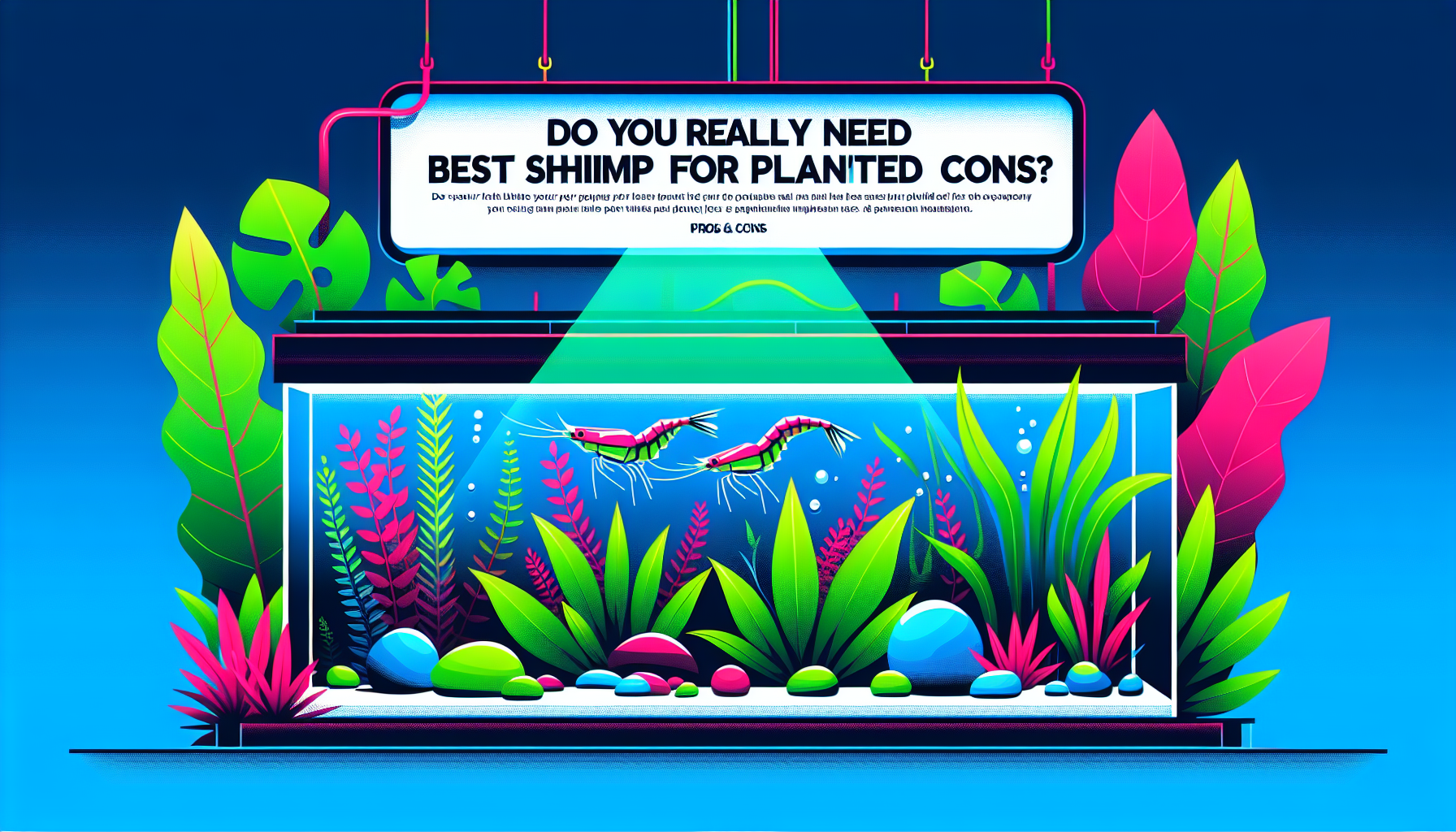Do You Really Need Best Shrimp for Planted Tanks? Pros & Cons
Considering adding shrimp to your planted tank? With their vibrant colors and practical benefits, freshwater shrimp have become a must-have for many aquascaping enthusiasts. But are they truly essential for a thriving aquascape? In this comprehensive guide, we’ll weigh the pros and cons, highlight top shrimp species for planted tanks, and help you decide if these tiny invertebrates are the right addition for your underwater paradise.
Why Do Aquascapers Love Shrimp?
Shrimp, especially species like Cherry Shrimp and Amano Shrimp, have earned a stellar reputation in aquascaping circles. They’re more than just eye-catching additions; they actively support tank health and can boost your aquascape’s visual appeal.
Natural Algae Eaters
One of the primary reasons aquascapers choose shrimp is their voracious appetite for algae. Amano Shrimp and Cherry Shrimp are renowned for cleaning up soft algae, helping to keep tank glass, plants, and décor spotless. This natural algae management reduces your maintenance time and helps balance the aquarium ecosystem.
Biodiversity and Aesthetics
Shrimp introduce movement and vibrant colors to planted tanks, from the ruby red of Cherry Shrimp to the glassy translucence of Ghost Shrimp. Their presence creates a lively, biodiverse microhabitat, stimulating natural behaviors in fish and other inverts.
The Pros: Benefits of Having Shrimp in Planted Tanks
- Algae Control: Efficient eaters of various types of algae, detritus, and leftover food.
- Plant Safety: Unlike some fish or snails, shrimp won’t harm healthy plants, making them a safe addition for sensitive aquascapes.
- Low Bioload: Most shrimp have minimal impact on water quality, perfect for nano and densely-planted tanks.
- Interesting Behavior: Shrimp are fascinating to watch, from grazing on plants to social groupings and molting.
- Reproduction: Many popular species (such as Neocaridina) readily breed in captivity, allowing hobbyists to grow their own colonies.
The Cons: Challenges and Considerations
While shrimp offer many benefits, there are a few challenges and points to consider before adding them to your aquascape:
- Sensitive to Water Parameters: Shrimp, especially species like Crystal Red Shrimp, require stable water conditions and can be sensitive to ammonia, nitrite, copper, and sudden changes.
- Predation Risk: Many freshwater fish see shrimp as a tasty snack. Research tankmates and avoid mixing with aggressive or large fish.
- Delicate Diet Needs: While they’ll graze on algae, shrimp still require a balanced diet, including shrimp pellets and blanched veggies, for optimal health.
- Cost and Availability: Specialty or high-grade shrimp can be costly and may not be readily available locally.
Top Shrimp Species for Planted Aquariums
Choosing the best shrimp for your planted tank depends on your goals and tank parameters. Here are some popular options for all skill levels:
- Cherry Shrimp (Neocaridina davidi): Hardy, colorful, and easy to breed—ideal for beginners and experienced aquascapers alike.
- Amano Shrimp (Caridina multidentata): Champion algae-eaters, slightly larger, and highly active in community aquariums.
- Ghost Shrimp (Palaemonetes spp.): Inexpensive and transparent; excellent detritus eaters for planted setups.
- Crystal Red/Black Shrimp (Caridina cantonensis): Striking color patterns, but require soft, acidic water and stable parameters—best for experienced hobbyists.
- Bamboo/Wood Shrimp (Atyopsis moluccensis): Unique filter-feeders that thrive in planted tanks with moderate flow.
For more details on selecting and caring for specific shrimp species, check out our complete guide to shrimp in aquascaping.
Tips for Successfully Keeping Shrimp in Planted Tanks
- Stable Water Parameters: Keep ammonia and nitrite at zero. Avoid sudden swings in pH or temperature.
- Gentle Filtration: Use sponge or pre-filtered intakes to prevent baby shrimp from being sucked into filters.
- Dense Planting: Provide plenty of plants and mosses for hiding spots and biofilm growth.
- Safe Tankmates: Pair shrimp with peaceful fish, snails, or keep a species-only tank for optimal breeding.
- Adequate Food: Supplement their diet with quality shrimp food and calcium sources for healthy molting.
Do You Really Need Shrimp in Your Planted Tank?
While shrimp are not strictly necessary for every aquascape, their benefits are hard to ignore. They’re maintenance partners, natural cleaners, and living accents for your planted aquarium. If you enjoy a thriving, balanced ecosystem and want to elevate your aquascaping experience, adding the best shrimp for planted tanks is a rewarding step.
Still, if your setup has aggressive fish, unstable water, or if you’re focused solely on high-energy plant growth, you may want to reassess or start with hardy species like Cherry Shrimp.
Conclusion
Shrimp can transform a planted tank—both functionally and visually. Balance the pros and cons, choose species suitable for your aquatic environment, and enjoy the diversity they bring. Ready to take your aquascaping game to the next level?
Start exploring our aquascaping guides for more tips, or reach out to the Aquascaping Academy community with your shrimp questions!



